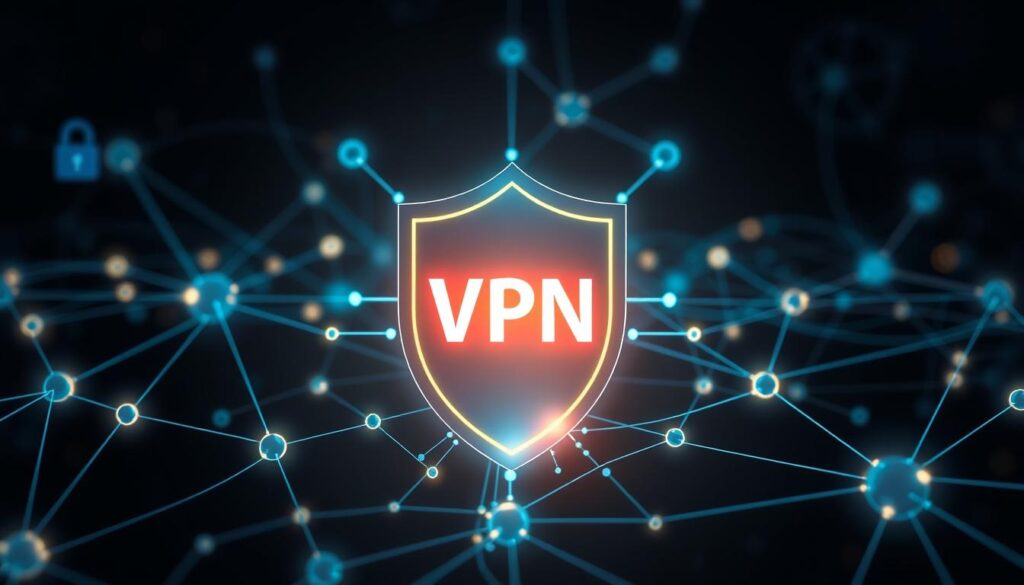In today’s digital landscape, safeguarding your network is paramount. This comprehensive guide will explore essential tips and tricks to enhance your network security, helping you protect your data, prevent cyber threats, and secure your digital assets effectively. From fortifying your defences with a robust firewall to implementing robust encryption and proactive intrusion detection, we’ll cover a wide range of strategies to ensure your network is impenetrable.
Key Takeaways
- Understand the importance of network security in the digital age
- Discover the essential components of a comprehensive network security strategy
- Learn how to effectively configure and maintain a reliable firewall
- Explore the benefits of encryption in safeguarding your data
- Implement proactive intrusion detection to monitor your network for potential threats
- Implement access controls and virtual private networks to secure remote access
- Stay up-to-date with the latest network security best practices and trends
Fortify Your Defenses with a Robust Firewall
In the ever-evolving landscape of network security, a strong firewall is the first line of defence against unauthorized access to your network. Understanding the different types of firewalls and their configurations is crucial to ensuring comprehensive protection for your digital assets.
Understanding Firewall Types and Configurations
Firewalls come in various forms, each tailored to address specific security needs. From basic packet-filtering firewalls to more advanced stateful inspection and application-level firewalls, the choice depends on the complexity of your network and the level of cybersecurity required. Careful configuration of firewall rules, based on your organization’s needs, is essential to effectively control access and network security.
Keeping Your Firewall Rules Up-to-Date
Maintaining the integrity of your firewall is an ongoing process. Regularly reviewing and updating your firewall rules is paramount to staying ahead of the ever-changing threat landscape. Proactive monitoring and prompt response to security alerts can help you swiftly address any vulnerabilities and ensure your firewall remains a robust barrier against potential intrusions.
“A well-configured firewall is the foundation of any effective network security strategy.”
Encryption: The Key to Safeguarding Your Data
In the ever-evolving landscape of network security, encryption emerges as a vital tool in safeguarding your data from unauthorized access. As cybercriminals become increasingly sophisticated, robust encryption protocols are essential to maintaining the confidentiality and integrity of sensitive information.
Encryption is the process of transforming readable data into an unreadable format, ensuring that only authorized parties with the appropriate decryption keys can access the information. By implementing strong encryption techniques, you can effectively shield your network and data from cybersecurity threats, such as data breaches and eavesdropping.
Encryption Techniques and Best Practices
To fortify your network security through encryption, consider the following techniques and best practices:
- Utilize industry-standard encryption algorithms, such as AES (Advanced Encryption Standard) and RSA, which are renowned for their robust data protection capabilities.
- Implement end-to-end encryption, where data is encrypted at the source and remains secure throughout its entire journey, even when transmitted over public networks.
- Regularly update your encryption keys and protocols to stay ahead of evolving threats and vulnerabilities.
- Educate your employees on the importance of proper encryption practices and ensure they understand the risks of using unsecured communication channels.
By embracing these encryption best practices, you can fortify your network security and safeguard your valuable data from malicious actors, ensuring the long-term resilience and success of your organization.
“Encryption is not just a technical solution, but a strategic imperative in the digital age.”
| Encryption Algorithm | Key Length | Security Level |
|---|---|---|
| AES-128 | 128 bits | Sufficient for most applications |
| AES-192 | 192 bits | Stronger security for sensitive data |
| AES-256 | 256 bits | Highest level of security |
Implement Intrusion Detection for Proactive Monitoring
In the ever-evolving world of network security and cybersecurity, proactive monitoring and intrusion detection are critical components of a robust defense strategy. By implementing an effective intrusion detection system (IDS), organizations can gain valuable insights into potential threats, enabling them to respond swiftly and mitigate vulnerabilities before they can be exploited.
Choosing the Right Intrusion Detection System
Selecting the appropriate IDS for your network is a crucial decision. Consider factors such as the size and complexity of your infrastructure, the types of threats you’re aiming to detect, and your budget. Common IDS options include network-based, host-based, and hybrid systems, each with its own strengths and weaknesses. Carefully evaluate your needs to ensure you choose the solution that best fits your network security requirements.
Analyzing and Responding to Alerts
Once your IDS is in place, it’s essential to have a well-defined process for analyzing and responding to security alerts. Develop a comprehensive plan that outlines the steps to be taken, from initial alert assessment to incident response. Ensure your team is equipped with the necessary skills and resources to investigate, triage, and mitigate potential threats in a timely and effective manner.
“Implementing a robust intrusion detection system is a critical step in safeguarding your network and protecting your organization from cyber threats.”
By embracing proactive intrusion detection strategies, you can stay one step ahead of potential attackers, strengthening your overall network security posture and minimizing the impact of cybersecurity incidents. Remember, a well-designed and effectively managed IDS can be the key to unlocking the full potential of your network security defenses.
A Comprehensive Approach to network security
Securing your network requires a multi-faceted approach. This section will explore the importance of access control mechanisms, such as authentication and authorization, as well as the benefits of using virtual private networks (VPNs) to enable secure remote access to your network resources.
Access Control: Controlling Who Has Access
Effective access control is a crucial component of network security. By implementing robust authentication and authorization processes, you can ensure that only authorized individuals can access your network resources. This includes:
- Strong password policies
- Multi-factor authentication
- Role-based access controls
- Regularly reviewing and updating access privileges
By carefully managing who has access to your network, you can significantly reduce the risk of unauthorized access and potential security breaches.
Virtual Private Networks: Secure Remote Access
In today’s dynamic work environment, remote access to network resources has become increasingly important. Virtual private networks (VPNs) offer a secure solution for remote workers to access your network securely. VPNs encrypt the communication between the user and the network, providing an additional layer of cybersecurity and protecting sensitive data from interception.
Implementing a VPN can help ensure that your remote employees can access the necessary network resources while maintaining the overall network security. By establishing a secure tunnel, you can safeguard your network from potential threats and unauthorized access.

“A comprehensive approach to network security is essential in today’s digital landscape. By combining access control and VPN technologies, you can create a robust defense against cybersecurity threats.”
Conclusion
In conclusion, this article has provided a comprehensive overview of essential tips and tricks to boost your network security. By implementing robust firewalls, leveraging encryption, deploying intrusion detection systems, and adopting a comprehensive approach to access control and remote access, you can effectively safeguard your digital assets and mitigate the risk of network security threats.
Throughout this journey, we’ve explored the importance of cybersecurity and the various strategies you can employ to fortify your defences. From understanding firewall configurations to implementing proactive monitoring systems, each section has highlighted the key elements necessary to enhance the overall security of your network infrastructure.
Remember, staying vigilant and continuously updating your security measures is crucial in today’s dynamic digital landscape. By implementing the tips and tricks outlined in this article, you can ensure your network remains secure and resilient against emerging cybersecurity challenges.



